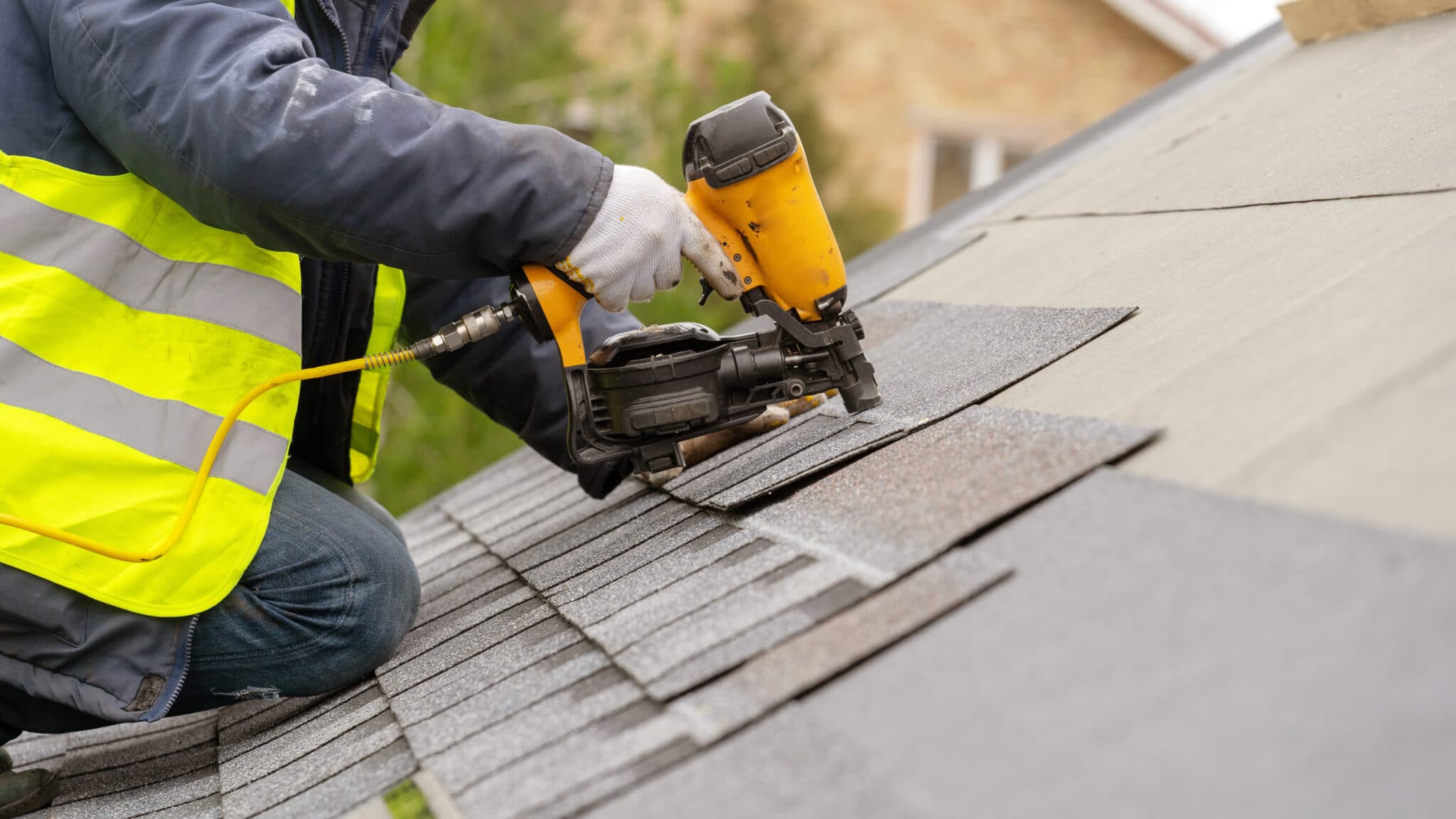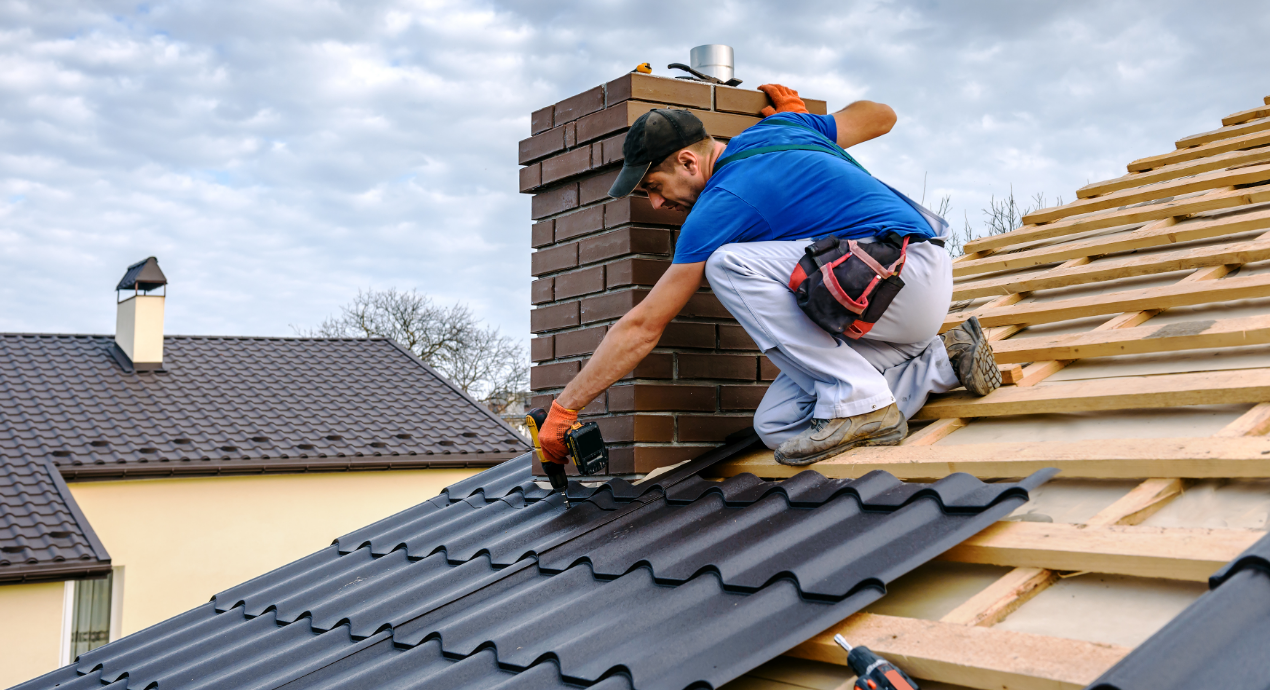Exploring the Different Types of Roof Coverings: Which One Is Ideal for Your Home?
When taking into consideration the myriad kinds of roofs available, it is vital to review exactly how each choice straightens with your home's unique demands, consisting of environment problems, aesthetic preferences, and structural functionality. From the timeless gable roofing system that effectively networks rain to the modern flat roofing offering city flexibility, each design offers distinctive benefits and challenges.
Gable Roof Coverings
Gable roofs, characterized by their triangular shape and sloping sides, are a popular option amongst house owners looking for both aesthetic appeal and functionality. This roof design effectively permits reliable water runoff, lowering the threat of water pooling and succeeding damages. Furthermore, the steep slopes create ample attic space, which can be utilized for storage space and even exchanged living locations.
One of the key benefits of saddleback roofs is their capacity to endure extreme climate condition. The layout helps in reducing wind resistance, making them particularly ideal for areas vulnerable to storms. Furthermore, gable roof coverings can be constructed using a selection of materials, consisting of shingles, tiles, and steel, offering homeowners with adaptability in design and budget plan.
From an architectural point of view, gable roof coverings can enhance the aesthetic charm of a home, providing a timeless and classic appearance. They can complement numerous architectural designs, from standard to modern styles. Nevertheless, it is necessary to consider prospective downsides, such as the vulnerability to snow buildup in colder climates. On the whole, saddleback roofs remain a preferred alternative due to their equilibrium of usefulness and style, appealing to a variety of house owners.
Flat Roofs
While often forgotten in support of even more standard roofing styles, flat roofs offer unique advantages that accommodate particular architectural demands and modern-day layout choices. These roofings are defined by their minimal pitch, permitting reliable usage of area, particularly in metropolitan atmospheres where maximizing square video is necessary.
One considerable benefit of level roofings is their adaptability. They can be utilized as extra home, such as roof gardens, patios, or photovoltaic panel setups, boosting the performance of a home. Furthermore, level roof coverings are commonly much easier and safer to browse during maintenance, helping with fixings and evaluations without the obstacles posed by high inclines.
Flat roofs can likewise be more cost-efficient in terms of products and installment. With a less complex style, they usually need less resources, equating into reduced labor prices. However, it's crucial to think about drainage and waterproofing, as flat roofings can be prone to merging water if not appropriately developed.

Hip Roofs
Hip roofs stand apart for their classy layout and architectural honesty, making them a popular choice among home owners. Identified by slopes on all four sides, hip roofings give a well-balanced aesthetic that enhances various architectural styles - roof repair oahu. The balanced nature of these roofings helps to distribute weight equally, improving security and resilience
Among the essential advantages of hip roofings is their ability to stand up to harsh climate conditions. The sloped surfaces facilitate reliable water drainage and snow overflow, minimizing the threat of leaks and structural damages. Furthermore, the style reduces wind resistance, making hip roof coverings less vulnerable to wind uplift compared to various other roof types.


Shed Roofing Systems
Lost roofings, in contrast to the intricacy of hip roofing systems, offer a structured and minimalist style that attract modern aesthetic appeals. Characterized by a solitary sloping surface, dropped visit the website roofs are commonly used in modern architecture, yard sheds, and various other functional structures. This simpleness not only improves aesthetic appeal however additionally enables reliable water overflow, making them suitable for numerous climates.
Among the key benefits of shed roof coverings is their cost-effectiveness. With less products called for and a straightforward setup procedure, home owners can save both time and money. The style likewise permits the unification of huge home windows or skylights, advertising all-natural light and producing roomy insides.
Nonetheless, it is necessary to think about the prospective disadvantages, including restricted insulation choices and the demand for careful style to stay clear of extreme heat accumulation. In addition, lost roof coverings might not mix flawlessly with standard design, which could be a worry for some house owners.
Inevitably, shed roofing systems provide a sensible and fashionable roofing remedy for those seeking modernity and efficiency. When choosing a roof type, assessing personal functional demands and aesthetic choices will guide house owners to the most effective choice for their unique requirements.
Mansard Roofs
Mansard roof coverings, defined by their distinctive four-sided style, are a trademark of French architecture that incorporates sophistication with capability. This architectural design features 2 slopes on each side, with the reduced slope being steeper than the top one. The distinct setup permits extra space in the upper degrees, making it a suitable choice for house owners looking for to make the most of useful area without broadening the structure's impact.
One of the substantial benefits of a mansard roofing system is its versatility. It can be adjusted to various architectural designs, from conventional to modern-day, improving the aesthetic appeal of any type of home. Furthermore, the enough space created under Get the facts the roof can conveniently accommodate dormer home windows, which permit natural light and ventilation, additional improving the convenience of the living location.
Nonetheless, possible property owners ought to think about the maintenance requirements linked with mansard roofings. The high inclines can bring about raised wear from weather condition exposure, necessitating normal inspections and repair work. Moreover, setup expenses may be greater contrasted to easier roofing designs as a result Your Domain Name of the intricacy of building and construction. Eventually, a mansard roofing system can be a superb choice for those prioritizing design and space.
Final Thought
Finally, the option of a proper roofing kind hinges on specific demands, environment factors to consider, and aesthetic preferences. Each roof covering style provides one-of-a-kind advantages, such as the performance of saddleback roofs, the modern appeal of shed roofings, and the stability of hip roofing systems. Furthermore, flat roofs offer functionality for city environments, while mansard roofings give added space despite higher setup prices. Ultimately, a thorough assessment of these elements will lead homeowners in making a notified decision.
From the traditional gable roofing system that successfully channels rainwater to the modern flat roof covering offering urban adaptability, each style provides distinctive benefits and challenges (roof repair oahu). In addition, the style minimizes wind resistance, making hip roof coverings less at risk to wind uplift compared to other roof types
Shed roofing systems, in contrast to the intricacy of hip roofings, use a minimalist and streamlined style that appeals to modern aesthetics. Each roof covering design presents distinct advantages, such as the efficiency of gable roofing systems, the contemporary appeal of shed roofs, and the security of hip roofs. Level roofs offer practicality for city atmospheres, while mansard roofs supply additional living space despite greater installation expenses.